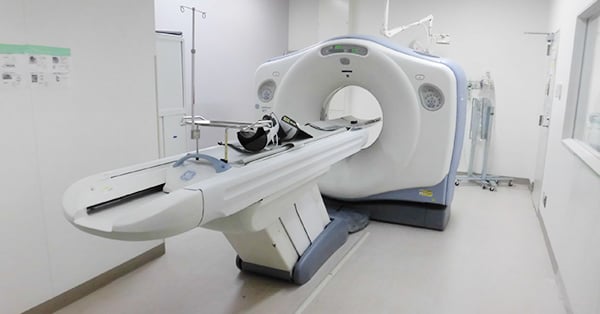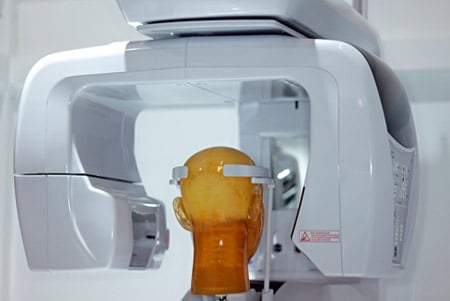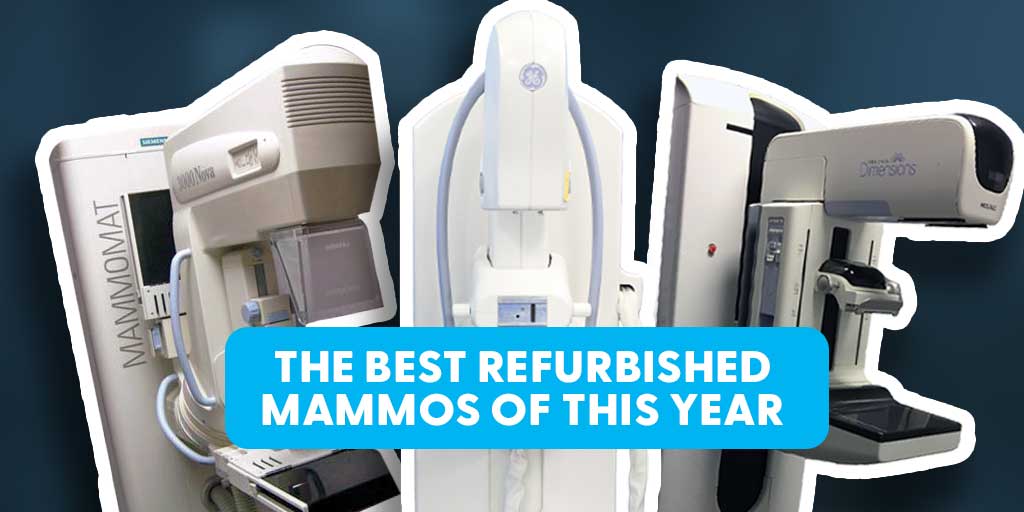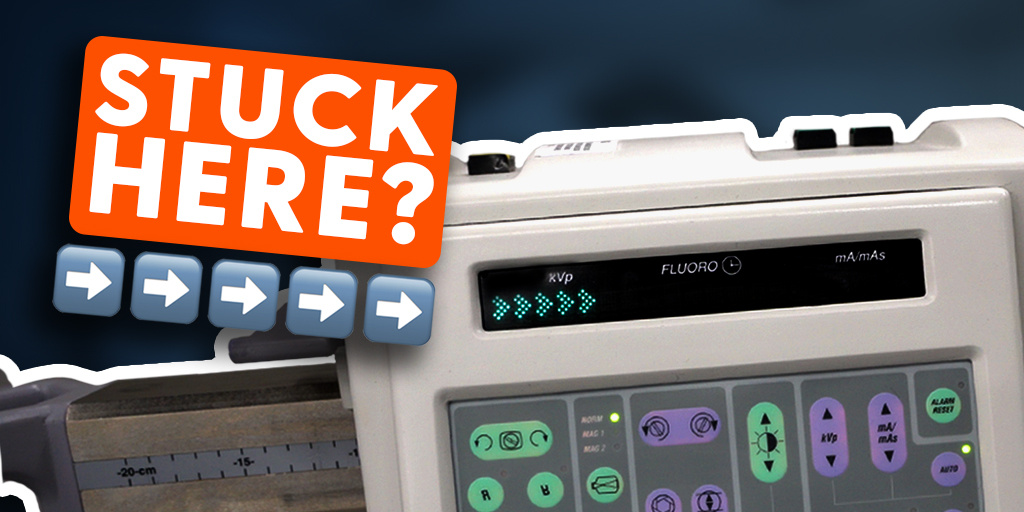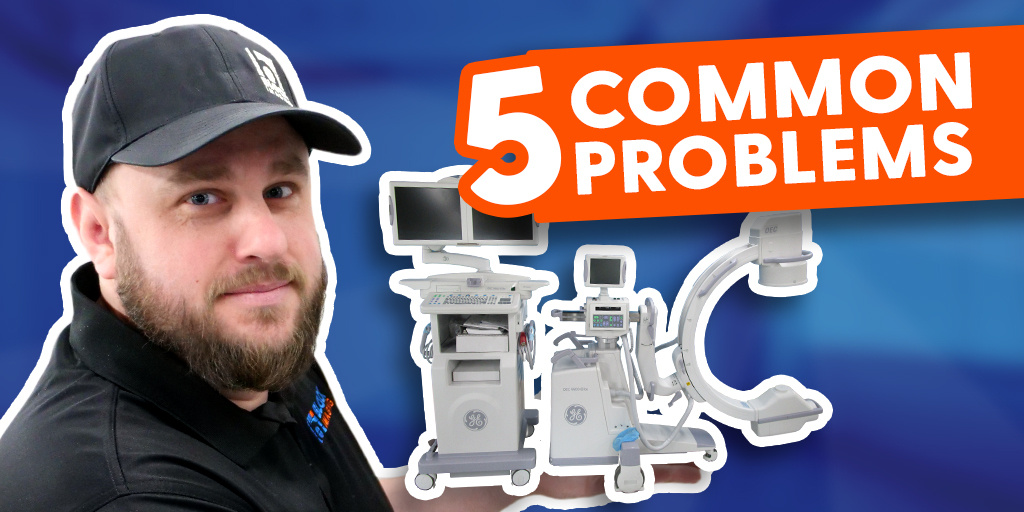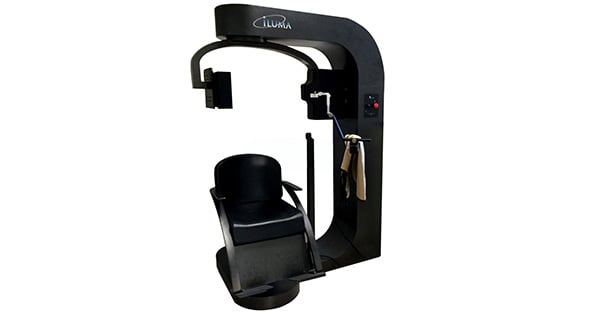
Curious about the differences between Cone Beam CT and CT?
You've come to the right place!
In this guide, we delve into the fundamentals of Cone Beam CT and traditional CT systems, exploring topics such as image quality, radiation exposure, technological efficiency, and design differences.
CT vs. Cone Beam CT: What's the difference?
System Design
A traditional CT machine typically features a large, ring-shaped gantry with a motorized table that moves the patient through the gantry during the scan. These machines are considerably larger than CBCT systems as they require a full suite to adhere to lead shielding guidelines.
Cone Beam CT design takes into account clinic space constraints and patient comfort. It's compact design resembles a smaller, square shaped gantry. Most CBCT scanners are equipped with upright seating, allowing the X-ray tube and panel detector to rotate around the patient's head.
Imaging Quality
Typically, traditional Computed Tomography machines capture larger areas of the body, offering more comprehensive imaging of internal structures. These systems are used in facilities that need detailed visualization of internal organs, tissues and structures throughout the body.
Cone Beam Computed Tomography provides relatively high resolution for imaging specific anatomical regions, such as the jaw or sinuses. It captures a smaller field of view, focusing on areas of interest such as the oral and maxillofacial region in dentistry.
While it continues to revolutionize diagnostic practices, it does come with certain drawbacks. The National Library of Medicine (2017) finds that "CBCT units have noticeably less soft tissue contrast than conventional CT machines. Three factors limit the contrast resolution of CBCT, which include increased image noise, the divergence of the x-ray beam and numerous inherent flat-panel detector-based artifacts".
Technological Efficiency
While both standard scanners and CBCT fall into the computed tomography category, there are some big technical differences between them.
With traditional CT, each "slice" must overlap to ensure that the system properly reconstructs the image. "Traditional CT uses a high-output, rotating anode X-ray tube. Cone beam tomography utilizes a low-power, medical fluoroscopy tube that provides continuous imaging throughout the scan."
Unlike traditional CT scanners, in CBCT an X-ray tube and detector panel rotate around the patient capturing data with a cone-shaped X-ray beam instead of the “slices” CT scanners are typically known for. The advanced technology of CBCT systems means reduced scan time and increased patient throughput.
Radiation Exposure
A CBCT's single-turn motion for image capture is faster than traditional CT's spiral motion. This enhanced speed not only boosts efficiency but also diminishes radiation exposure by eliminating slice overlap.
In fact, research from the National Library of Medicine finds that the radiation exposure from CBCT is significantly lower, around 10 times less than conventional CT scans, particularly when focusing on maxillofacial areas.
This drastic difference in radiation exposure underscores the importance of CBCT technology in minimizing radiation exposure for patients.
What is A CT?
"CT" is often an abbreviation for "Computerized Tomography". This medical imaging method utilizes X-rays to generate detailed cross-sectional images of the body for diagnosis and treatment planning.
CT machines are used in a variety of specialties for diagnosis and treatment planning, including:
- Radiology
- Oncology
- Emergency Medicine
- Surgery
- Neurology
- Cardiology
Unlike Cone Beam CT, traditional CT offers broader imaging capabilities, encompassing larger areas of the body and providing high-resolution images of internal structures beyond the craniofacial region.
What is A Cone Beam CT?
Cone Beam CT (CBCT), is a special type of x-ray machine that is designed to take images of the craniofacial region. Featuring a compact design and 360° flexibility, CBCTs take high-resolution images using a cone-shaped x-ray beam.
The data received from these systems is used to reconstruct 3D images predominantly in the following specialties:
- Dental (teeth)
- Oral/ maxillofacial region (mouth, jaw, neck)
- Ears, nose, and throat (ENT)
Given its specialized capabilities, CBCT technology has become integral in these specific medical fields.
The Takeaway
Cone Beam CT and Traditional CT, both offer promising solutions for a range of imaging needs.
Your choice between the two may hinge on factors such as radiation exposure concerns and design flexibility, particularly aligned with your specialty's demands.
If stepping into CT is something you're hoping to accomplish in the near future, we'd love to start a conversation about how you can do this affordably. Use the button below to tell us about your project and get a quote!

Paul Crawford
Paul Crawford is the Vice President of Equipment Solutions at Block Imaging. Paul connects with healthcare facilities across the world to offer CT solutions and manages the wholesale sales team. When Paul is not helping customers with their CT needs, he enjoys spending time with his family, watching MSU sports, and CrossFit.



